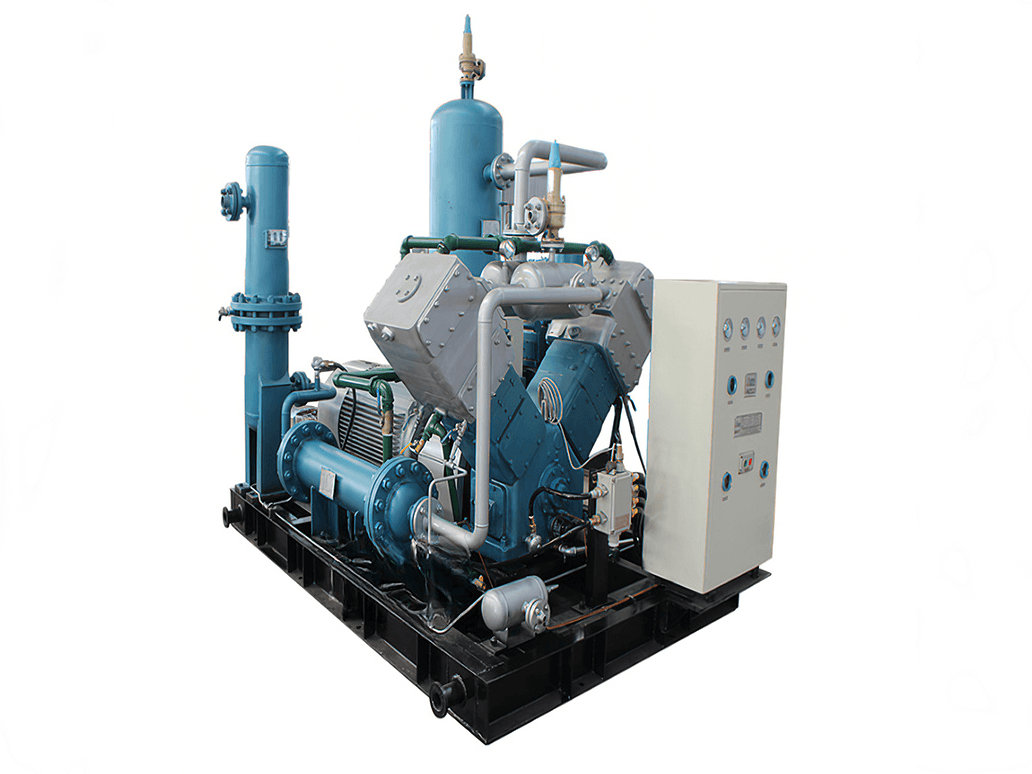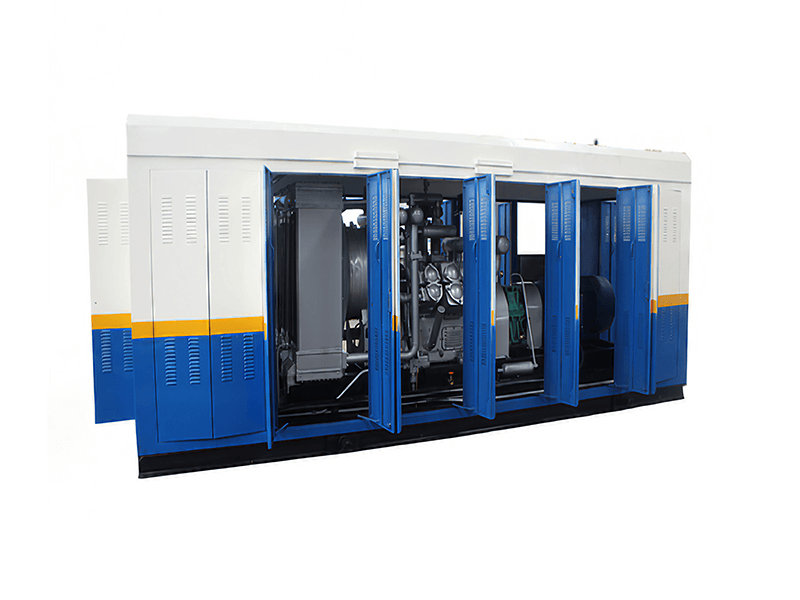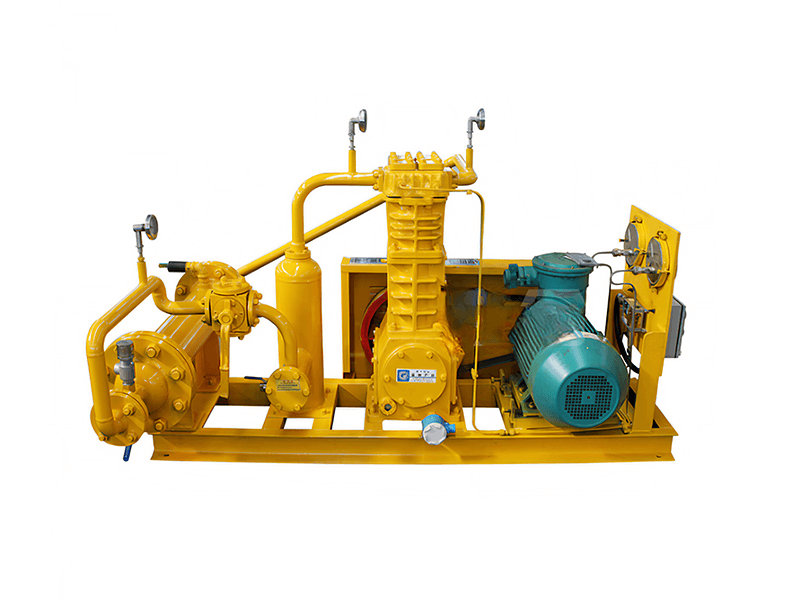Compressing ammonia gas serves several important purposes in various industries and applications.
1. Increase Pressure and Temperature: Compressing ammonia gas helps increase its pressure and temperature. Higher pressure and temperature are often required to meet the specific needs of different processes or applications. For example, in refrigeration systems, compressed ammonia gas at elevated pressure and temperature facilitates efficient heat exchange and cooling.
2. Facilitate Transport and Storage: Compressing ammonia gas reduces its volume, making it more compact and easier to transport and store. By compressing the gas, a larger quantity can be contained within a given space, reducing transportation costs and storage requirements.
3. Enhance Efficiency: Compression is essential to improve the efficiency of various industrial processes. In refrigeration systems, compressing ammonia gas increases the pressure, allowing it to absorb heat more effectively and achieve lower temperatures during the expansion phase. This results in improved cooling efficiency and overall system performance.
4. Enable Chemical Reactions: Ammonia gas is often used as a reactant or raw material in chemical processes. Compressing ammonia gas ensures that it can be efficiently transported and fed into reactors or reaction chambers where it participates in chemical reactions, such as in the production of fertilizers or other chemical compounds.
5. Power Generation: Compressed ammonia gas can be utilized as a fuel in certain power generation technologies, such as ammonia-fired gas turbines or fuel cells. Compressing the gas helps increase its pressure before it enters the combustion chamber or the electrochemical reaction in the fuel cell, enabling efficient energy conversion and power generation.
6. Control Process Parameters: In many industrial applications, precise control of process parameters is crucial. By compressing ammonia gas, the pressure and flow rate can be controlled and adjusted as per the specific requirements of the process, ensuring optimal operation and desired outcomes.
7. Safety Considerations: In applications where ammonia gas is involved, compressing the gas can contribute to safety by reducing the risk of leakage. Compressed ammonia gas is typically stored and transported in sealed containers, minimizing the potential for accidental release and ensuring safer handling.
Overall, compressing ammonia gas provides the means to manipulate its properties, such as pressure, temperature, and volume, to meet the specific needs of diverse applications, ranging from refrigeration and chemical manufacturing to power generation and beyond.

Achieving compression of ammonia gas
Achieving compression of ammonia gas typically involves using a compressor specifically designed for handling ammonia. The compressor applies mechanical force to the gas to increase its pressure. Here are the general steps involved in achieving compression of ammonia gas:
1. Selection of Ammonia Compressor: Choose a compressor suitable for compressing ammonia gas. It should be designed to handle the properties of ammonia, including its chemical characteristics, operating conditions, and required pressure ratios. Common types of compressors used for ammonia compression include reciprocating compressors, screw compressors, and centrifugal compressors.
2. Intake and Suction: The ammonia gas is drawn into the compressor through an intake or suction line. This gas is typically at a lower pressure and temperature than the desired compression level.
3. Compression Stage(s): The compressor consists of one or more compression stages. Each stage involves the compression of the ammonia gas to a higher pressure level. The gas is compressed by mechanical means, either through piston-cylinder arrangements (reciprocating compressors), rotating screw elements (screw compressors), or impeller-driven centrifugal force (centrifugal compressors).
4. Cooling and Heat Removal: During compression, the ammonia gas heats up due to the increase in pressure. Cooling mechanisms, such as interstage or final coolers, are employed to remove excess heat generated during the compression process. This cooling helps maintain the gas within the desired temperature range and prevents overheating.
5. Discharge: Once the desired pressure level is reached, the compressed ammonia gas is discharged from the compressor. It is then directed to the next stage of the process or transported to the desired location for utilization.
6. Control and Monitoring: Ammonia compression systems are equipped with control and monitoring mechanisms to ensure efficient and safe operation. These include pressure sensors, temperature sensors, safety valves, and control systems that regulate the compressor's speed, discharge pressure, and other parameters.
7. Safety Considerations: Safety precautions are crucial when working with ammonia gas. Proper ventilation, leak detection systems, and compliance with safety standards and regulations are essential to protect personnel and the environment.
It's important to note that the specific configuration and operation of ammonia compression systems can vary depending on factors such as the required pressure level, flow rate, system capacity, and the specific type of compressor used. Consulting the manufacturer's guidelines and industry best practices is recommended when designing, installing, and operating an ammonia compression system.
Applications of ammonia compression
Ammonia compression plays a crucial role in various industrial applications where ammonia gas is used. Here are some common applications of ammonia compression:
1. Refrigeration and Air Conditioning: Ammonia is widely used as a refrigerant in industrial refrigeration systems and large-scale air conditioning units. Ammonia compression helps in compressing the ammonia gas to increase its pressure and temperature, facilitating the heat exchange process and enabling efficient cooling.
2. Chemical Manufacturing: Ammonia is a key raw material in the production of various chemicals, such as fertilizers, explosives, plastics, and synthetic fibers. Ammonia compression is employed in chemical manufacturing processes to compress and transport ammonia gas between different stages, reactors, or storage facilities.
3. Power Generation: Ammonia can be utilized as a fuel in certain power generation technologies. In such cases, ammonia compression is necessary to increase the pressure of the gas before it enters the combustion chamber or turbines, enabling efficient energy conversion and power generation.
4. Fuel Cells: Ammonia can be used as a source of hydrogen in fuel cells. Ammonia compression is required to pressurize the ammonia gas, which is then fed into the fuel cell system for electrochemical reactions, producing electricity and heat.
5. Gas Storage and Distribution: Ammonia compression is essential for storing and distributing ammonia gas in the form of pressurized cylinders or tanks. Compressing ammonia increases its storage capacity and allows for efficient transportation to different locations, facilitating its use in various applications.
6. Wastewater Treatment: Ammonia is a common pollutant in wastewater, and it needs to be removed before discharge. Ammonia compression is utilized in processes such as ammonia stripping, where ammonia gas is released from wastewater through a stripping tower. The compressed ammonia gas can then be treated or further processed for recovery or safe disposal.
7. Hydrogen Production: Ammonia can be a potential source of hydrogen for hydrogen fuel production. Ammonia compression is involved in the process of decomposing ammonia (ammonia cracking) to release hydrogen gas, which can be utilized in fuel cells, industrial processes, or as a clean fuel.
8. Food and Beverage Industry: Ammonia compression finds application in the food and beverage industry for various processes, including refrigeration and freezing of food products, preservation of perishable goods, and carbonation of beverages.
These are just a few examples of the many applications where ammonia compression is employed. The specific requirements and configurations of ammonia compression systems may vary depending on the application, scale of operation, and industry standards.


























